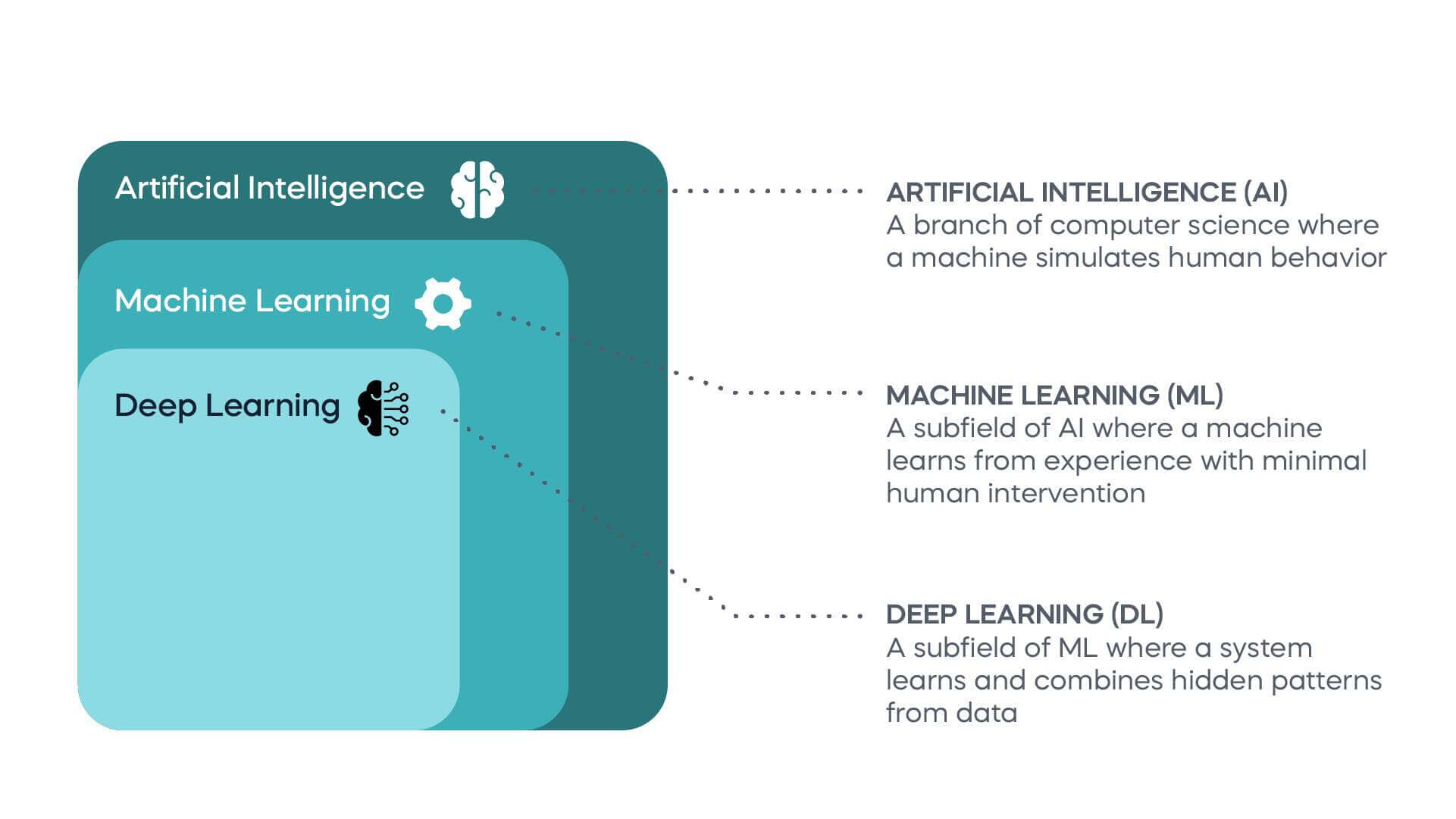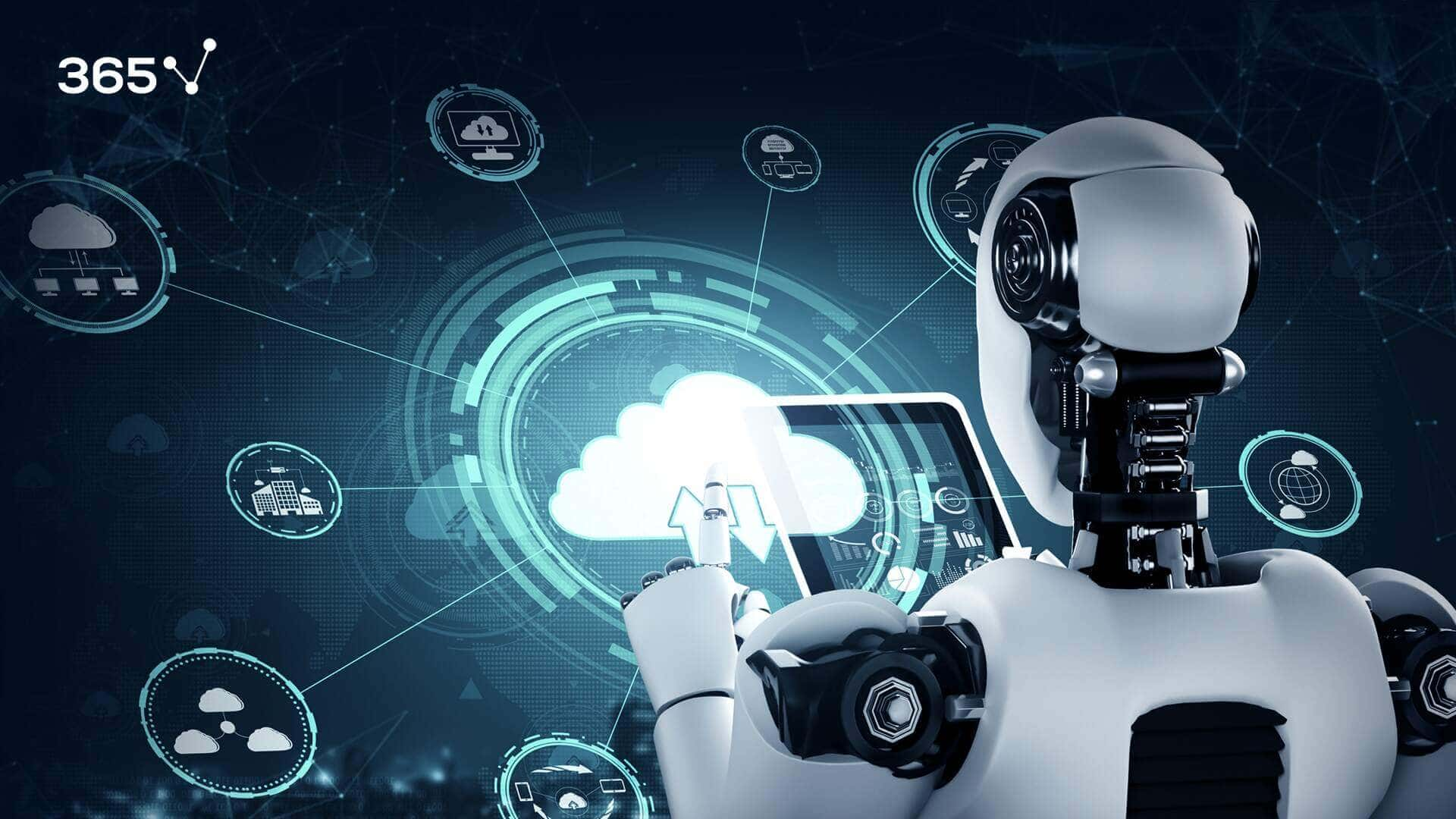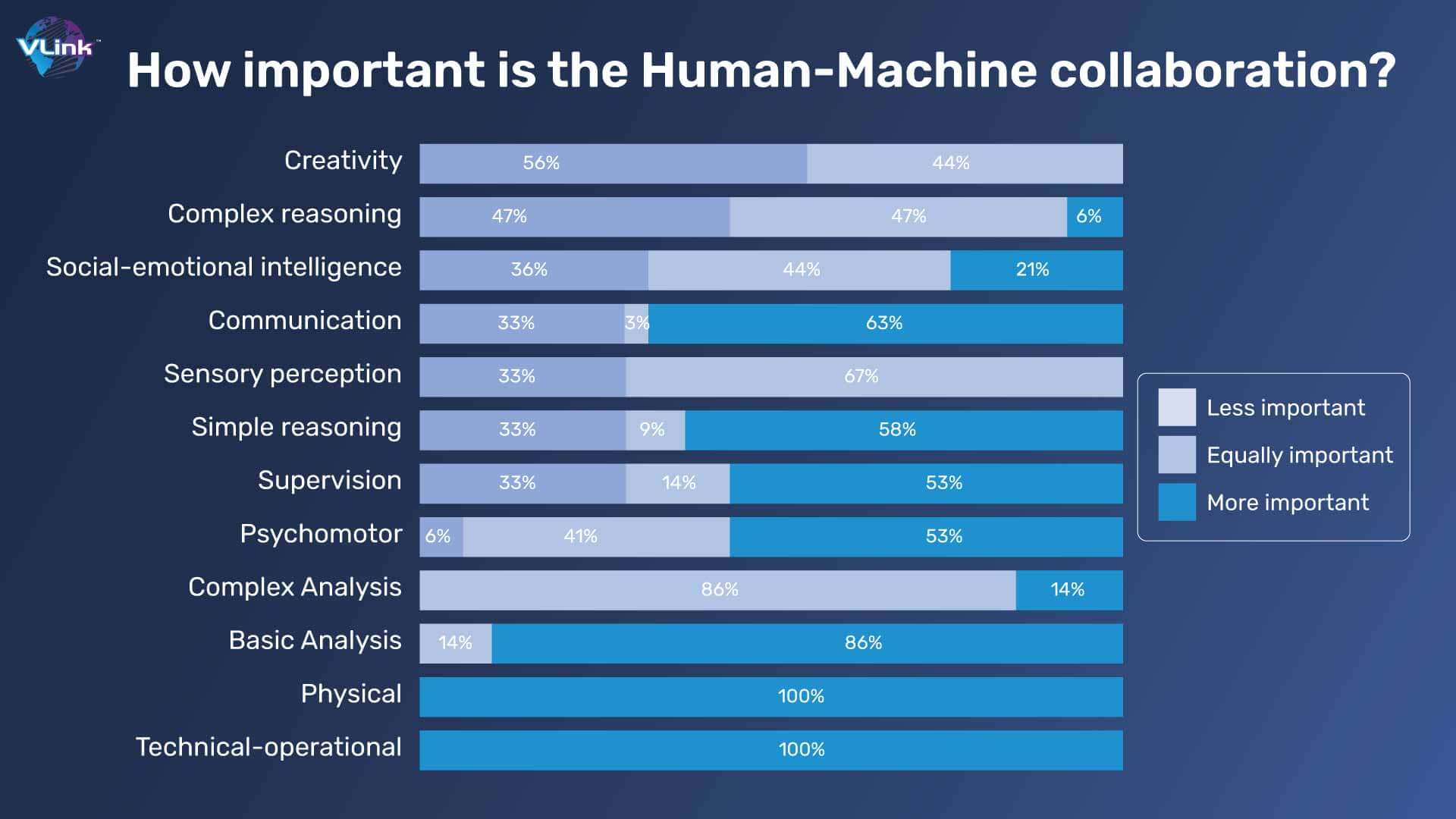
The Evolution of Work and Introduction to Machine Learning
Historical Perspective on Job Landscapes
Throughout history, the job landscape has evolved dramatically, influenced by technological advancements and societal shifts. From the agrarian societies where farming was prevalent to the industrial revolution that birthed factories, each era redefined the workforce.
- Agriculture Era: Dominated by manual labor in farming and craftsmanship.
- Industrial Revolution: Shifted focus to factories and mass production, creating new job roles.
- Information Age: Brought digital technologies, leading to a rise in IT, software, and services.
Today, we find ourselves in a new era driven by automation and innovation, setting the stage for machine learning.
Definition and Basics of Machine Learning
Machine learning, a subset of artificial intelligence, involves computers learning from data to make decisions or predictions. This technology allows systems to improve their performance over time without explicit programming.
Key concepts include:
- Algorithms: Sets of rules or instructions for processing data.
- Training Data: Data used to teach the machine learning models.
- Predictive Analytics: Uses historical data to forecast future outcomes.
The transformative potential of machine learning makes it a critical player in reshaping job landscapes, paving the way for new opportunities and challenges.
.jpeg)
Impacts of Machine Learning on Various Industries
Healthcare Sector
Machine learning is revolutionizing the healthcare sector in astounding ways. With algorithms capable of analyzing vast amounts of data, healthcare professionals can predict disease outbreaks, personalize treatment plans, and enhance diagnostics.
For instance, ML models are increasingly used to:
- Predict patient outcomes: Helping doctors make informed decisions.
- Enhance radiology: Assisting in identifying anomalies in X-rays and MRIs with precision.
Finance and Banking Industry
Similarly, in the finance and banking sector, machine learning is redefining processes and improving efficiency. From credit scoring to fraud detection, banks are leveraging ML algorithms to stay ahead.
Some key applications include:
- Risk assessment: Analyzing customer data to provide accurate loan approvals.
- Algorithmic trading: Using ML to make split-second investment decisions based on market trends.
Manufacturing and Production
The manufacturing industry is also not left behind, as machine learning enhances production line efficiency by predicting maintenance needs and optimizing supply chains.
Highlights include:
- Predictive maintenance: Minimizing downtime by anticipating equipment failures.
- Quality control: Ensuring products meet standards through real-time monitoring.
These advancements illustrate how machine learning is fundamentally transforming the way industries operate, creating smarter, more efficient systems.

Automation and Job Disruption
Jobs at Risk of Automation
As machine learning and automation continue to advance, certain jobs find themselves at heightened risk of being replaced. Routine and repetitive tasks are particularly vulnerable, leading to significant job disruptions.
Examples of jobs at risk include:
- Data Entry Clerks: Automated systems can easily handle data input tasks, reducing the need for manual labor.
- Manufacturing Jobs: Robots are performing tasks faster and more accurately on assembly lines.
- Retail Workers: Self-checkout systems and online shopping are changing the landscape of retail roles.
These shifts create anxiety about job security but also call for proactive measures.
Reskilling and Upskilling Strategies for Employees
To navigate this changing terrain, employees must embrace continuous learning. Organizations can foster a culture of reskilling and upskilling by implementing strategies such as:
- Training Programs: Offering workshops and online courses to enhance skills relevant to new technologies.
- Mentorship Initiatives: Pairing employees with experienced mentors to guide their development.
- Flexible Learning Paths: Allowing employees to learn at their own pace to balance work and education.
By investing in training, both employees and organizations can better prepare for a future where automation complements human work instead of replacing it.

The Role of Machine Learning in Recruitment and HR
AI in Resume Screening
In the dynamic world of recruitment, machine learning is becoming a game-changer. The initial phase of any hiring process often involves sifting through countless resumes, a tedious and time-consuming task for HR professionals.
With AI in resume screening, organizations can:
- Analyze keywords and phrases: Automatically identifying qualified candidates based on specific job requirements.
- Reduce bias: Algorithms can be designed to overlook factors like age or gender, focusing solely on skills and experiences.
A friend of mine recently shared her experience; after applying for a position, she learned that an AI tool had helped shortlist candidates. It streamlined the process, allowing recruiters to focus on the most suitable applicants.
Enhancing Employee Experience through ML Algorithms
Beyond recruitment, machine learning enhances employee experiences throughout their tenure. For instance, ML algorithms can personalize training and development opportunities, catering to individual career goals.
Key benefits include:
- Tailored Learning Paths: Providing training recommendations based on skills gaps.
- Predictive Analytics: Anticipating employee needs and potential turnover risks.
By embracing machine learning, organizations can create a more engaged and satisfied workforce, paving the way for long-term success and retention.

Future Skills and Job Market Trends
Emerging Job Roles in the Age of Machine Learning
As machine learning continues to evolve, it gives rise to a variety of new job roles that didn’t exist a decade ago. This technological revolution creates opportunities for those willing to adapt.
Some emerging job roles include:
- Data Scientists: Professionals skilled in analyzing data trends and building predictive models.
- Machine Learning Engineers: Specialists focused on designing algorithms that improve through experience.
- AI Ethicists: Individuals dedicated to ensuring that AI applications adhere to ethical guidelines.
A colleague of mine recently transitioned from a marketing role to data analytics, a path that aligns perfectly with this trend.
Importance of Soft Skills in the Digital Era
While technical skills are critical, soft skills have never been more vital in today’s job market. As workplaces become automated, the human aspect of work shines even brighter.
Key soft skills include:
- Emotional Intelligence: Understanding and responding to the emotions of others.
- Collaboration: Working effectively in teams, both in-person and virtually.
- Adaptability: Embracing change and being open to learning.
These skills complement technical expertise, ensuring that individuals remain valuable in an increasingly automated landscape, where human judgment and creativity are essential.

Ethical Considerations and Challenges in the Adoption of ML
Bias and Fairness in Machine Learning
As machine learning becomes more integrated into our lives, ethical considerations around bias and fairness have surfaced prominently. If not addressed, biased algorithms can lead to unfair treatment of certain groups, perpetuating existing inequalities.
For instance, think about a hiring algorithm trained primarily on historical data that may overlook diverse candidates. This could result in a lack of representation in the workplace, as seen in various tech organizations.
To combat this issue, companies need to:
- Diversify Training Data: Including a broad range of data points to accurately reflect diverse populations.
- Implement Auditing Procedures: Regularly reviewing algorithms to identify and mitigate biases.
Privacy Concerns and Data Security Measures
Alongside bias, privacy concerns are significant when adopting machine learning technologies. The collection and processing of personal data can lead to breaches of individuals’ privacy if not handled correctly.
Organizations should prioritize:
- Data Minimization: Collecting only the data necessary for the task at hand.
- Robust Encryption Techniques: Ensuring that sensitive information remains secure.
- Transparency: Communicating openly with users about how their data is used.
By addressing these ethical challenges, organizations can create a more equitable and secure environment for deploying machine learning, fostering trust among users and stakeholders alike.

Collaboration between Humans and Machines
Augmented Intelligence in the Workplace
As machine learning technology continues to advance, the concept of augmented intelligence is gaining traction in workplaces globally. This approach emphasizes the collaborative potential of combining human intelligence with machine capabilities, rather than replacing one with the other.
An example of this synergy can be found in the field of healthcare, where doctors use AI tools to analyze patient data more efficiently. These tools enhance, rather than replace, human decision-making, providing valuable insights that allow healthcare professionals to focus more on patient care.
Key benefits of augmented intelligence include:
- Improved Decision-Making: Enhanced access to data-driven insights helps workers make informed choices.
- Reduced Cognitive Load: Automating routine tasks frees up mental resources for critical thinking.
Enhancing Productivity through Human-Machine Partnerships
Moreover, the partnership between humans and machines leads to significant productivity gains across industries. By leveraging machine learning algorithms, organizations can streamline workflows and enhance operational efficiency.
Consider how chatbots assist customer service representatives. They handle routine queries autonomously, allowing employees to devote their time to complex customer issues that require a personal touch.
The results speak for themselves:
- Faster Response Times: Customers receive immediate answers while allowing representatives to manage high-value interactions.
- Increased Employee Satisfaction: Workers feel less burdened by repetitive tasks and can engage more meaningfully in their roles.
Together, these collaborative efforts foster a more productive, innovative, and satisfied workforce, demonstrating that humans and machines can indeed work hand in hand for greater success.

Adaptation Strategies for Organizations and Workers
Implementing a Future-Ready Workforce
In today’s rapidly evolving job landscape, organizations must adopt strategies to cultivate a future-ready workforce. This involves preparing employees for the challenges posed by machine learning and automation so that they can thrive in their roles.
One effective approach is to:
- Identify Skill Gaps: Conduct assessments to understand current employee skills versus future needs.
- Invest in Training Programs: Provide resources and opportunities for professional development tailored to emerging technologies.
A friend who works in a tech startup recently shared how their company implemented a mentorship program, pairing employees with industry experts. This initiative significantly helped workers hone their expertise and feel more confident in navigating new technologies.
Creating a Culture of Continuous Learning
Beyond training programs, organizations should foster a culture of continuous learning. Encouraging employees to adopt a growth mindset creates an environment where learning is integral to daily operations.
Strategies to promote this culture include:
- Regular Workshops and Seminars: Hosting learning sessions on relevant topics keeps skills updated.
- Encouraging Knowledge Sharing: Creating platforms for employees to share insights and valuable learnings promotes collaboration.
By embedding a culture of continuous learning, organizations not only strengthen their workforce but also enhance employee morale and engagement. As the workplace evolves, those committed to adaptation will undoubtedly emerge stronger and more competitive.

Conclusion and Future Outlook
Summary of ML’s Influence on Job Landscapes
As we’ve explored throughout this discussion, machine learning (ML) is significantly reshaping job landscapes across industries. The integration of ML technologies not only enhances efficiency but also creates new roles while redefining existing ones.
Key influences include:
- Increased Automation: Routine tasks are being automated, paving the way for more strategic roles.
- Data-Driven Decisions: Organizations are leveraging insights from ML to make informed choices, driving business successes.
My personal experience with a company adopting ML in data analysis revealed just how transformative this technology can be, turning data into actionable insights that guide strategic initiatives.
Predictions for the Future of Work with Machine Learning
Looking ahead, the future of work with machine learning will likely involve an even deeper collaboration between humans and machines. We can anticipate:
- New Job Roles: More positions will emerge that focus on managing and interpreting AI-driven insights.
- Greater Emphasis on Soft Skills: As automation handles more technical tasks, emotional intelligence, creativity, and adaptability will become paramount.
Embracing these changes will be vital for both organizations and individual workers, paving the way for innovations that redefine how we work and collaborate in an increasingly automated world. By focusing on adaptation and continuous learning, we can prepare ourselves for this exciting future.

